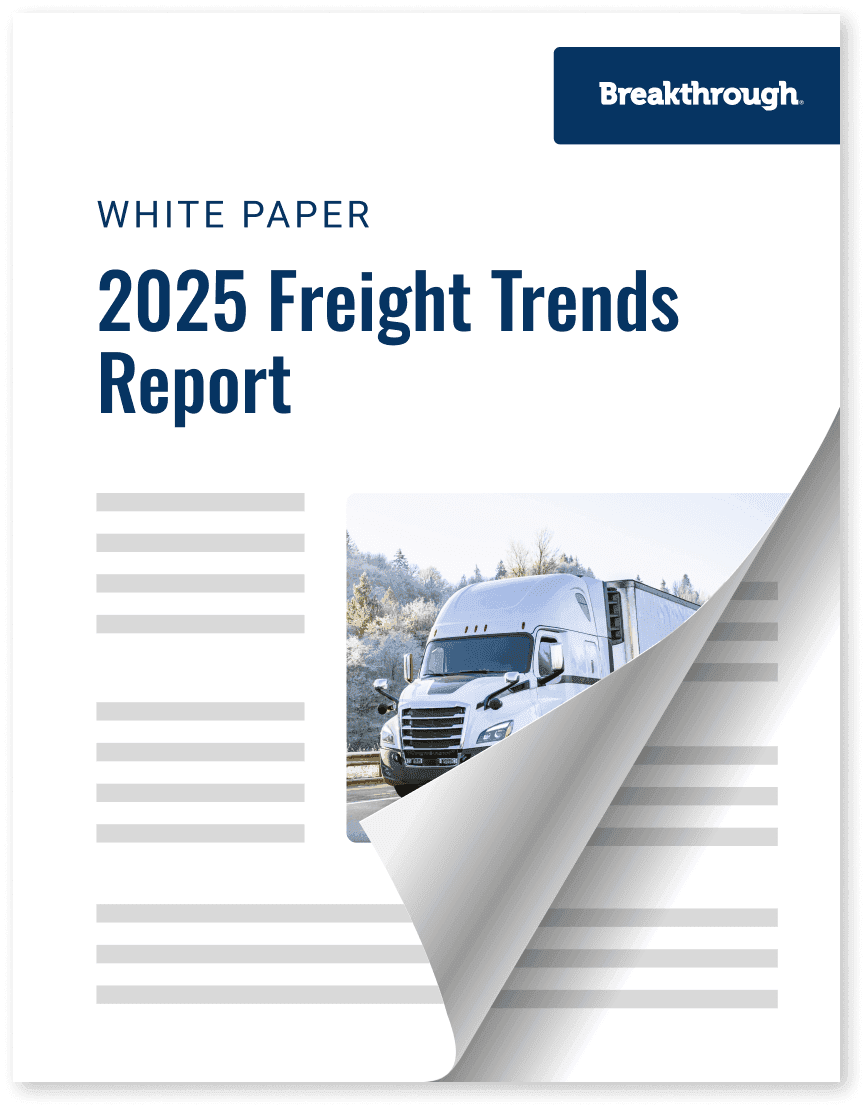2025 Freight Trends Report

Trending
Top Posts
Market Events
Mexico Policy Update: Key Economic, Energy, and Trade Shifts
5 min read
December 31, 2024
Market Events
Upcoming EU Regulations and Their Impact on Maritime Shipping
6 min read
December 23, 2024
Sustainability and Tech
The Future of Heavy-Duty Transportation: How CNG and RNG are Driving Sustainability and Cost Stability
4 min read
December 10, 2024

6 min read
November 19, 2024

Share:
When it comes to crude oil, shippers hold a strategic interest. As significant consumers of diesel fuel, understanding the implications of crude oil market price fluctuations is crucial to their bottom line, with crude oil accounting for around 50% of the final cost of diesel.
Slight changes in supply and demand of one crude oil refined product can ultimately result in price changes in others. This makes the relationship between the oil and gas industries highly intertwined. That's why it's crucial for major fuel consumers like shippers and carriers to closely monitor shifts in any refined products market.
So, how many gallons are in a barrel of crude oil?
A 42-gallon crude oil barrel contains approximately 45 gallons of salable refined crude oil products, including ultra-low sulfur diesel (ULSD), kerosene/jet fuel, hydrocarbon gas liquids, residual fuel, and many others. Prices of crude oil are measured in barrels, while production totals across all producing countries are measured in million barrels per day (mmbd).
The EIA expects Brent crude oil will average $79/barrel in 2025, but in the past decade, it has been as high as $110/barrel and as low as $30/barrel.
The refining process of crude oil results in a diverse array of products, each serving distinct purposes across various industries. From gasoline, which fuels our daily commutes, to kerosene that powers aircraft, these products are integral to our daily lives. Understanding the composition and allocation of these refined products within a barrel of crude oil offers insight into their respective roles and importance. Each component serves distinct functions and holds varying levels of significance in different sectors. Price dynamics of petroleum products can change based on geography, market fundamentals, industry tendencies, and behind-the-scenes refining complexities. Understanding these factors provides a comprehensive perspective on the multifaceted petroleum industry.

Gasoline is one of the most important and prevalent refined products derived from crude oil in the U.S. It accounts for 20 gallons, or 45%, of a 45-gallon barrel of refined fuels. While gasoline is primarily used as fuel for standard passenger vehicles, it is also used by boats, powertools, and small engines. It is often sent to fuel blending terminals where blending agents are added to stay compliant with ethanol requirements.
Retailers often sell gasoline in three grades: Regular, Midgrade, and Premium – also referred to as unleaded, super, or super-premium. Each retailer may include unique brand-specific additives to differentiate their products from their competition.
Ultra-low-sulfur diesel (ULSD), also used interchangeably with heating oil and biodiesel, is the second-largest portion of a refined product barrel, equating to roughly 11 gallons, or 25%, of the finished product. This versatile fuel supports agriculture equipment, heavy-duty transportation, home heating, and refrigerated equipment.
Due to the comparable composition of ULSD, heating oil, and biodiesel, the products are often priced interchangeably. Regional price dynamics often create significant commodity price variances. The key difference in selling price is taxation, as road diesel is subject to fuel taxes further down the product supply chain. Together, ULSD and heating oil make up 12 gallons of a refined barrel.
Kerosene accounts for roughly 4 gallons, or 9%, of the refined products derived from crude oil. This light petroleum distillate is commonly used as fuel in heaters, lamps, cooking stoves, and water heaters. Multiple grades of kerosene exist, though specifications vary depending on means of utilization.
Kerosene-type jet fuel is created via similar refining techniques, though distinct specifications through aircraft configuration differentiate generic kerosene from jet fuel. Kerosene-type jet fuel has both commercial and military uses for jet and aircraft engines.
Hydrocarbon gas liquids (HGL) typically make up approximately 2 gallons, or 4%, of refined products. They serve as feedstock to produce various chemicals, plastic products, and synthetic rubber. Additionally, they are used as fuels for heating, cooking, transportation, additives for gasoline, and blending agents for crude oil products.
Residual fuel is a more general classification for fuel oils that ultimately remain after distillates and lighter HGL has refined away during the refining process. The production of residual fuels makes up one of the smallest portions of a barrel of refined products in the United States, accounting for just 1 gallon, or 2%, of refined output.
Residual fuels are segmented into two key categories, Number 5 and Number 6. Number 5 residuals are used in powerplants and steam-powered vessels. Number 6 residuals are used for electric power generation, space heating, and ocean vessels as bunker fuel, which has greatly been greatly affected by the marine shipping regulatory landscape.
Understanding the intricacies of crude oil and its refined derivatives is an important part of a shipper's role. However, what's more important is how shippers should respond to market shifts in crude oil prices.
One key strategy is to use market-based fuel reimbursements. This approach allows shippers to align their operations with the cost fluctuations of crude oil, helping to create a more balanced and sustainable business model.
Keeping an eye on the dynamics of crude oil and actively adjusting fuel reimbursements to its market changes is not just beneficial, but a necessity for any industry-leading shipper.
Given the significant impact of crude oil prices on fuel costs, gaining a strategic understanding and proactive management of these fluctuations through market-based fuel reimbursements can lead to substantial cost savings. For shippers, this knowledge enhances their ability to adapt to market shifts effectively. By implementing Fuel Recovery, the transportation industry’s only market-based fuel reimbursement solution, shippers can align their operations with the dynamic oil market, ensuring their business models remain agile and competitive.
Learn how Fuel Recovery can transform your transportation network!

5 min read
December 31, 2024
Explore Mexico's latest policy updates under President Claudia Sheinbaum, including energy reform, transportation investments, and trade adjustments amidst shifting U.S.-Mexico dynamics.
Read more
6 min read
December 23, 2024
Discover how the European Union's 2025 regulatory updates will reshape the maritime shipping industry, from emissions trading to rising compliance costs.
Read more
4 min read
December 10, 2024
Explore how compressed natural gas (CNG) and renewable natural gas (RNG) are transforming heavy-duty transportation. Learn about their cost stability, environmental benefits, and role in achieving sustainability goals.
Read more